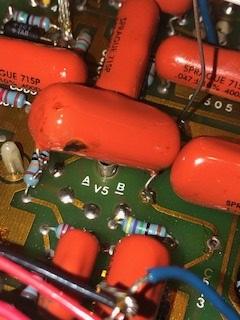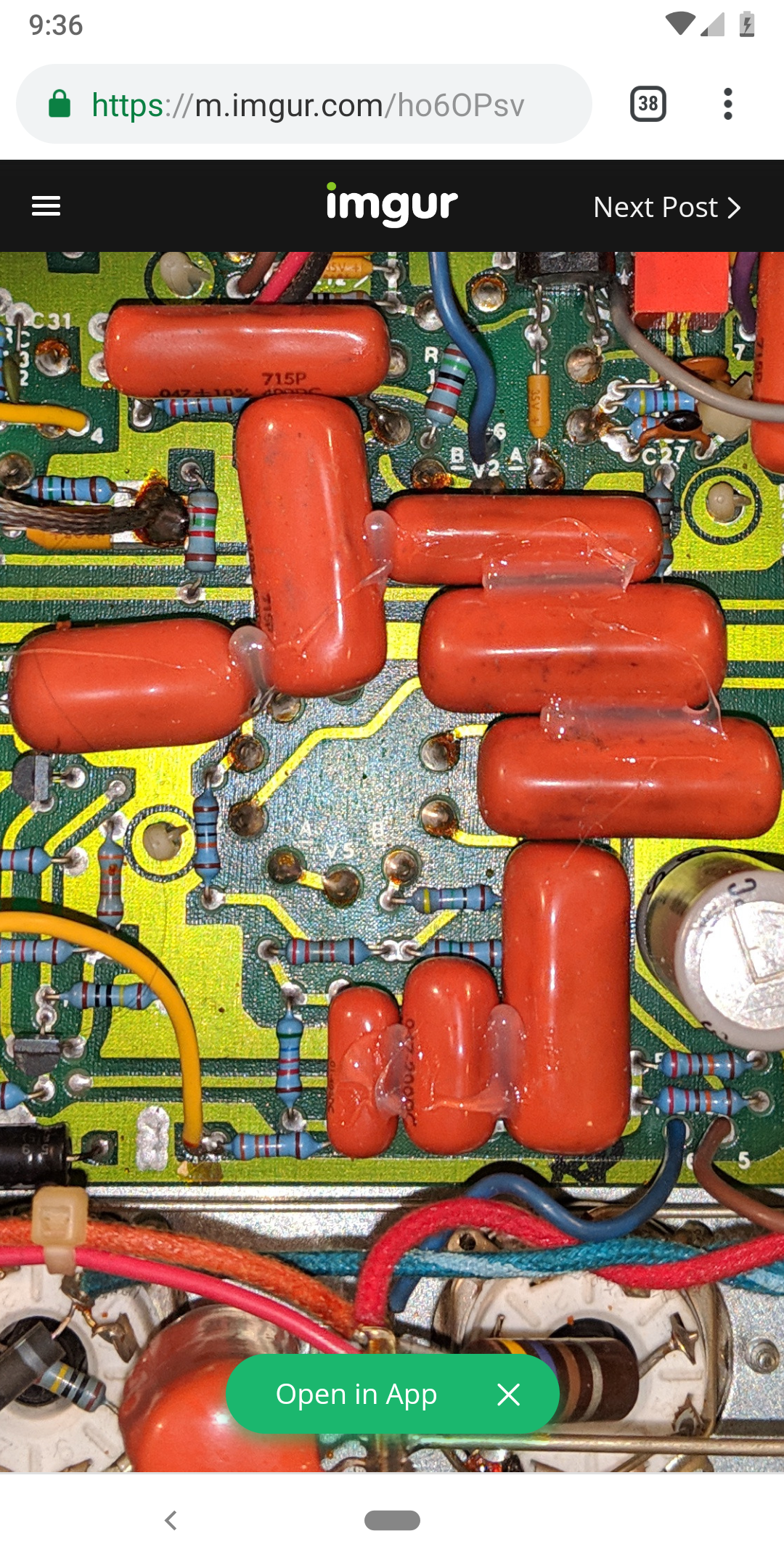gregfromhawaii
Member
Hi folks - I am a newbie to this forum. I have a problem with my Mesa Boogie Mark III Black Stripe Long Head, which just makes this horrible loud snap, crackle and popping. The amp stopped working and I found that one of the two 50uf 75v capacitor leaked out. I changed both of those capacitors and changed out the 220uF 300V Axial capacitors in the high voltage supply as they were leaking as well. Since I never had the capacitors changed since 1985, I proceeded to basically change all of the capacitors except one which would require me to take off the board.
Anyway, my amp turns on and both the pre-amp and power amp tubes glow red, but the amp just makes a crackling/static sound when I turn it from standby and no sound is heard from my guitar. The crackling/static gets worse when I tap the amp.
I changed out all the pre-amp and power amp tubes (twice) in order to make sure it wasn’t a tube issue, and it still makes the crackling/static sound with brand new tubes.
The weird thing is that If I flip the amp upside down, the crackling/static sound stops (even when I tap the amp), but still no sound comes through either the speaker or the output line.
Any ideas that you folks have would be appreciated.
Anyway, my amp turns on and both the pre-amp and power amp tubes glow red, but the amp just makes a crackling/static sound when I turn it from standby and no sound is heard from my guitar. The crackling/static gets worse when I tap the amp.
I changed out all the pre-amp and power amp tubes (twice) in order to make sure it wasn’t a tube issue, and it still makes the crackling/static sound with brand new tubes.
The weird thing is that If I flip the amp upside down, the crackling/static sound stops (even when I tap the amp), but still no sound comes through either the speaker or the output line.
Any ideas that you folks have would be appreciated.





